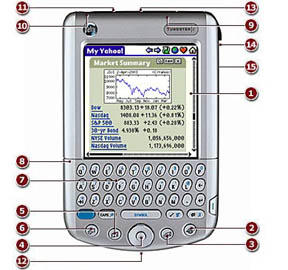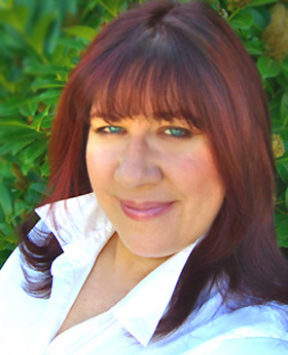When you think of mobile handheld computers, you might be starting to think of Microsofts Pocket PC. However, the father and by far the dominant market share player in the industry is Palm, now known as palmOne, with the recent acquisition of Handspring.
palmOne devices range the full spectrum of SmartPhones and Wi-Fi-embedded PDA devices with built-in cameras, music and video clip players and high-resolution screens for your pictures.
I own a Palm Tungsten C and my husband is devoted to his Microsoft Pocket PC, both have built-in Wi-Fi (802.11b) technology, so our home as become a proving ground to compare and contrast these two top handheld devices.
I decided to get the scoop on the handheld industry and the new devices from palmOne and talked with Anthony Armenta, director of software products management for palmOne.
Q: There was some big news for palmOne as a company this past summer.
Armenta: Yes. We merged with HandSpring. palmOne now has a complete line of products, from basic handheld organizers that are $99 to advanced handhelds with color and multimedia all the way up to the new Treo line which we gained from the HandSpring merger. The new Treo 600 is an excellent third generation smart phone.
When we merged with HandSpring, we became one company – palmOne. At the same time, we also split with PalmSource, a separate company that owns the operating system. We get the operating system from PalmSource, we build on top of that lots of additional software solutions Web browsers, e-mail, and a lot of our telephone for the phone side and create the handhelds that everyone knows and loves.
Q: You have a wide selection and various types of devices from SmartPhones with the Treo Line to the Zire & Wi-Fi enabled Tungsten PDAs. Which of these lines are you seeing the fastest growth in adoption?
Armenta: We just introduced three new products, plus the Treo. Our Tungsten E is the number one selling handheld for $199. It has a great color screen with the sleek, slim form, plus it gives you both business software and multimedia software. You can do the fun stuff like video playback and photos and listen to MP3s that you store on an expansion card. You can also do some serious business work with Word and Excel documents and carry PowerPoint presentations with you.
Our second bestseller right now is the Tungsten T3, our higher end product. Its got our larger 320 x 480 display and whats really cool about this display is you can work in both portrait and landscape mode, either in a tall view the way most people are familiar with it or you can turn it sideways and, with a single tap, work in that wide view. Thats great with a spreadsheet or if you are surfing the Web or doing e-mail. The Tungsten T3 also has built-in Bluetooth wireless technology and this allows you to surf the Web or get your e-mail on the go.
Q: It seems like size is an important factor for each of your product segments.
How are you differentiating the size in each of your product markets?
Armenta: We look very closely at the individual needs people have. These are really personal products. Some people are doing more media and some people are doing more business documents and some people are using the product more like a phone. For example, with the Treo 600 vs. earlier models, its a lot narrower and smaller. We did a lot of ergonomics to make sure that keyboard worked really well even though its very small. Frankly, the most important design goal with the Treo 600 is to make sure you didnt look silly when you put it up to your face to talk.
You look at a product like the Tungsten T3 and important thing here was our biggest display. Its still a very small compact device but it has a slider design. You can slide the slider open to get this really large display.
Q: I have a Tungsten C, which has built-in Wi-Fi (802.11b) technology. Where did you get the main Tungsten?
Armenta: Tungsten is the hardest element used in light bulbs. For us, it represents strength and innovation. Since the Tungsten brand is our business line, our corporate customers said it sounded solid and robust, which speaks for our design philosophy. With the product like our Tungsten C, we went with the very professional look and feel.
Q: Some of your devices support Bluetooth and some are wireless. Why dont you explain where you draw the line which devices get Bluetooth and which get WiFi.
Armenta: Our Tungsten C has built-in Wi-Fi and our Tungsten T3 has built-in Bluetooth.We looked at how people work. The Tungsten C is targeted to a corporate user who is not at their desks but in a campus environment. The Wi-Fi allows you to access the company network for free. You dont have to pay a monthly service charge to a carrier. Not only is it available when youre in the building, Wi-Fi is available in some homes and, more and more, youre seeing it in whats called hot spots. Places like Starbucks and McDonalds, airports and motels are starting to deploy Wi-Fi.
For people who travel extensively and not always near a hot spot, Bluetooth makes a lot of sense. Its not networking as much as a cable replacement. It allows you to connect one device to another in the same way you would use a cable a couple of years ago.
Q: With all the mergers and acquisitions in the handheld industry, how does palmOne fit in to the market share against Microsofts Pocket PC?
Armenta: palmOne is still the leading provider of handhelds and the Palm OS is by far the leading operating system. The handheld market, like the general economy, isnt growing as fast as it once was. We have seen some bright spots, however. For instance, when we introduced the Zire handhelds last year, our $99 handheld, we sold one million in the first six months. We found that 74 percent of purchasers were first-time buyers. By offering new price points such as $99, we are able to bring in new users.
Q: Do all your devices synchronize with the PC?
Armenta: Right out-of-the-box all our handhelds synchronize with Microsoft Outlook. We also synchronize with Palm Desktop, so if you are a first time handheld owner and you dont use or like Outlook, the Palm Desktop is an easy, slimmed down desktop organizer. Whats great is when you synchronize, your data is backed up on both your handheld and your computer. Handhelds are very portable so if you happen to lose your handheld, your data is safe back at your desktop. Then you just get a new handheld, put it in the cradle and synchronize all of your data, all your calendars, all your contacts and all your applications back into you Palm. Its very different for the Pocket PC where you can synchronize your calendar but you dont get any of your applications.
The full audio interview is available at WebTalkRadio.com.
Dana Greenlee is co-host/producer of the WebTalkGuys Radio Show, a Tacoma-based nationally syndicated radio and webcast show featuring technology news and interviews. This Saturdays show discusses the mobile handheld industry with palmOnes Anthony Armenta, including the new Zires and Tungsten devices; also, Lockergnome.coms Chris Pirillo talks about his new book Online: The Book, RDF Site Summary (RSS) news syndication, Gnomedex, SlashDot and other random net thoughts. WebTalk Radio is heard at 11 a.m. Saturday on KLAY-AM (1180) and 10 p.m. Tuesday on KVTI-FM (90.9).







